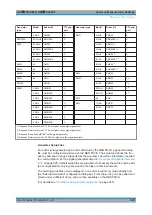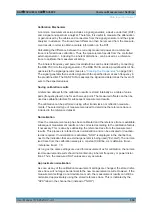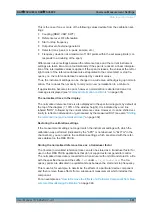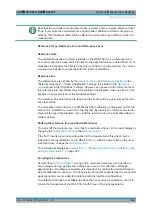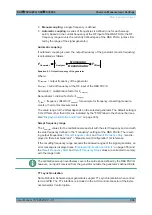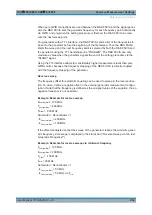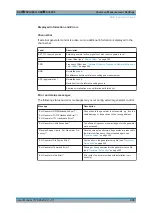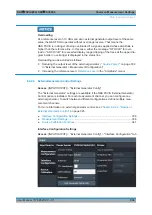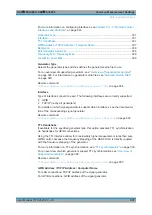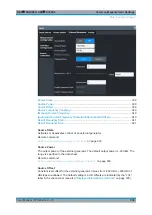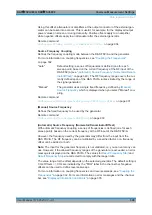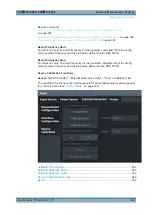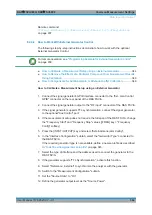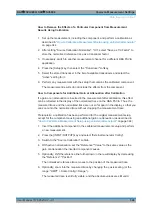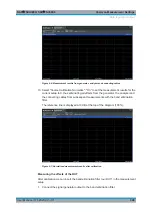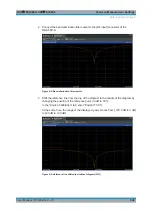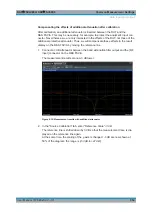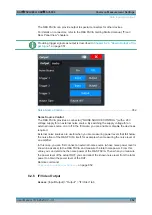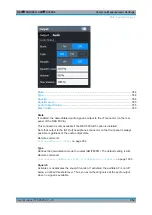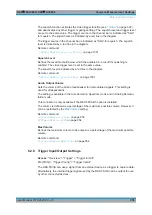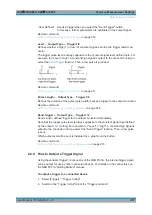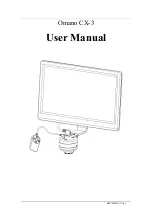
Common Measurement Settings
R&S
®
FSVA3000/ R&S
®
FSV3000
343
User Manual 1178.8520.02 ─ 01
Remote command:
Save as Trd Factor
Uses the normalized measurement data to generate a transducer factor. The trace
data is converted to a transducer with unit dB and stored in a file with the specified
name and the suffix
.trd
under
"
C:\Program Files\Rohde-Schwarz\FSV3000\<version>\trd
". The fre-
quency points are allocated in equidistant steps between start and stop frequency. The
generated transducer factor can be further adapted using the "Transducer" softkey in
the [SETUP] menu.
For more information on transducers, see
Chapter 12.5.1, "Basics on Transducer Fac-
This function is only available if
is switched on.
Note:
Note that the
normalized
measurement data is used, not the
reference
trace!
Thus, if you store the normalized trace directly after calibration, without changing any
settings, the transducer factor will be 0
dB for the entire span (by definition of the nor-
malized trace).
Remote command:
[SENSe:]CORRection:TRANsducer:GENerate
Reference Position
Defines the position of the
in percent of the total y-axis range.
The top of the diagram is 100%, the bottom is 0%. By default, the 0
dB line is displayed
at the top of the diagram (100%).
This setting is only available if normalization is on (see
" Source Calibration Normalize
The reference line defined by the reference value and reference position is similar to
the
defined in the "Amplitude" settings. However, this reference line
only affects the y-axis scaling in the diagram, it has no effect on the expected input
power level or the hardware settings.
The normalized trace (0
dB directly after calibration) is displayed on this reference line,
indicated by a red line in the diagram. If you shift the reference line, the normalized
trace is shifted, as well.
Remote command:
DISPlay[:WINDow<n>]:TRACe<t>:Y[:SCALe]:RPOSition
Reference Value
Defines the reference value to be displayed at the specified
.
This setting can be used to shift the reference line and thus the normalized trace, simi-
lar to the
Shifting the Display ( Offset )
defined in the "Amplitude" settings shifts the ref-
erence level
in the display
.
Shifting the normalized trace is useful, for example, to reflect an attenuation or gain
caused by the measured DUT. If you then zoom into the diagram around the normal-
ized trace, the measured trace still remains fully visible.
Data Input and Output

